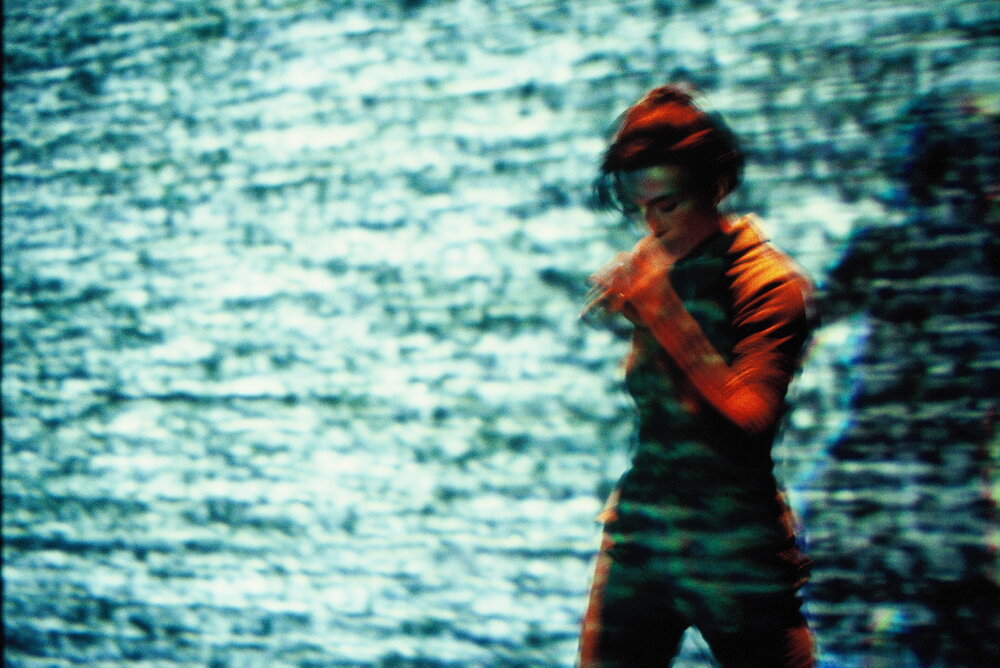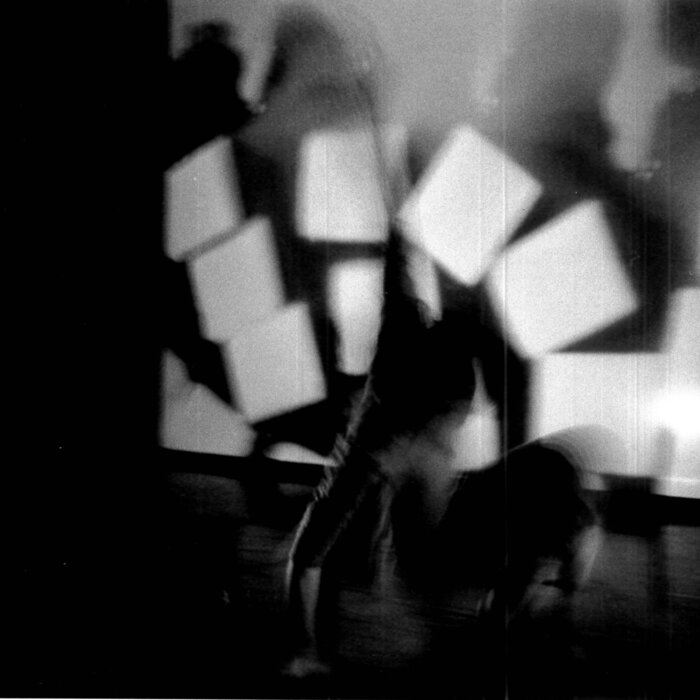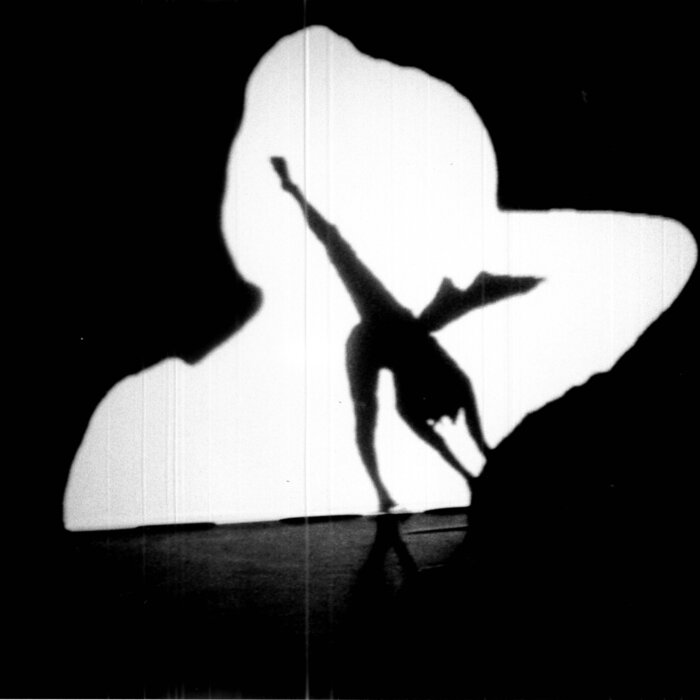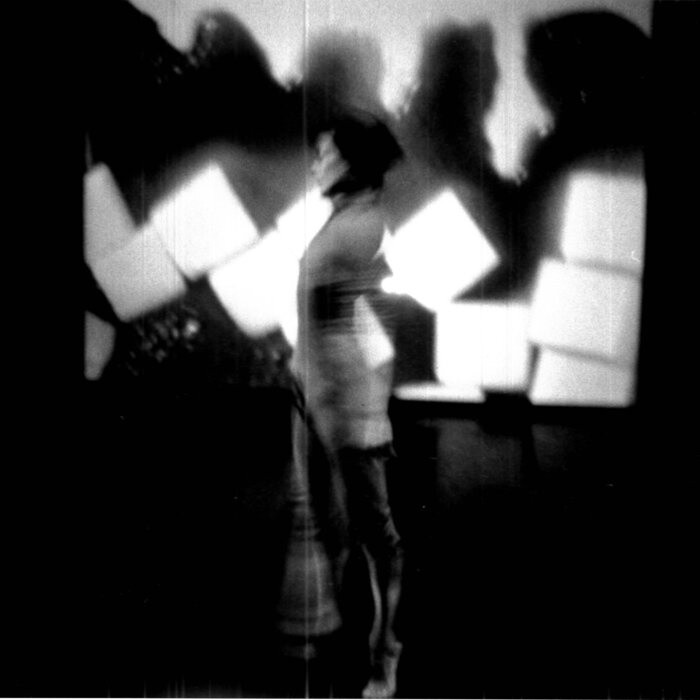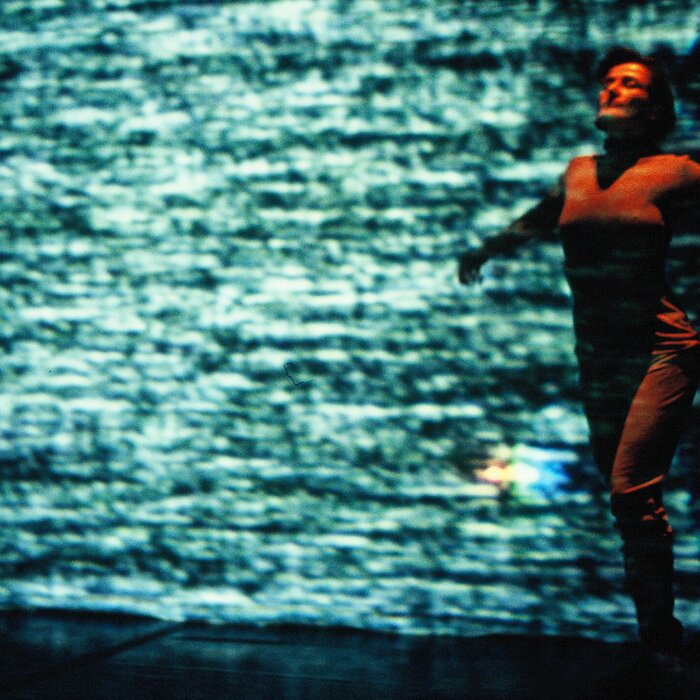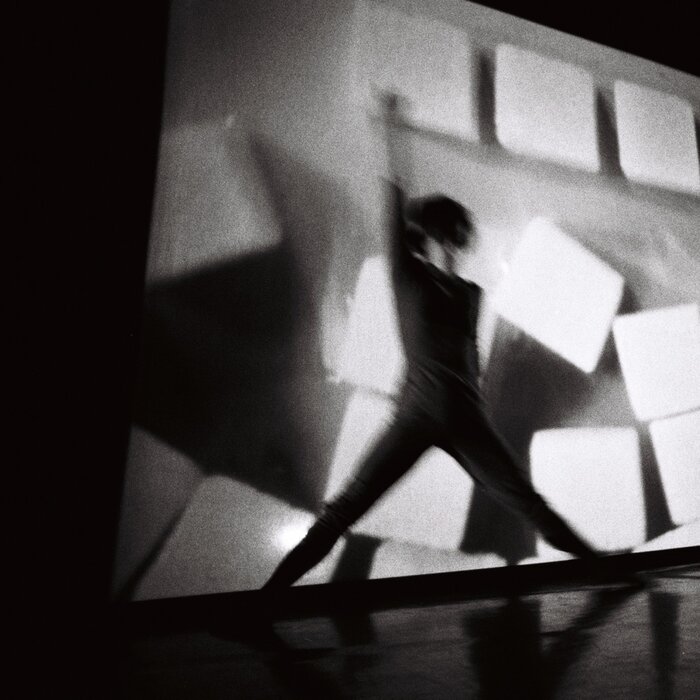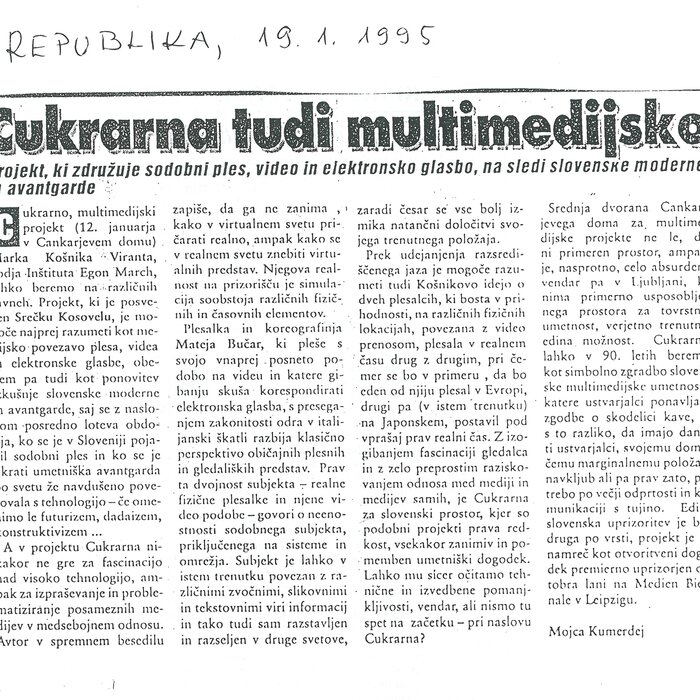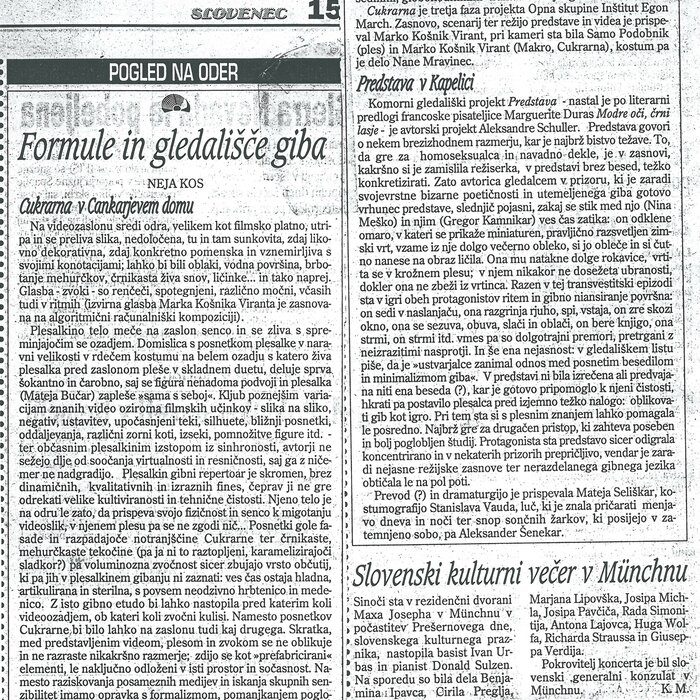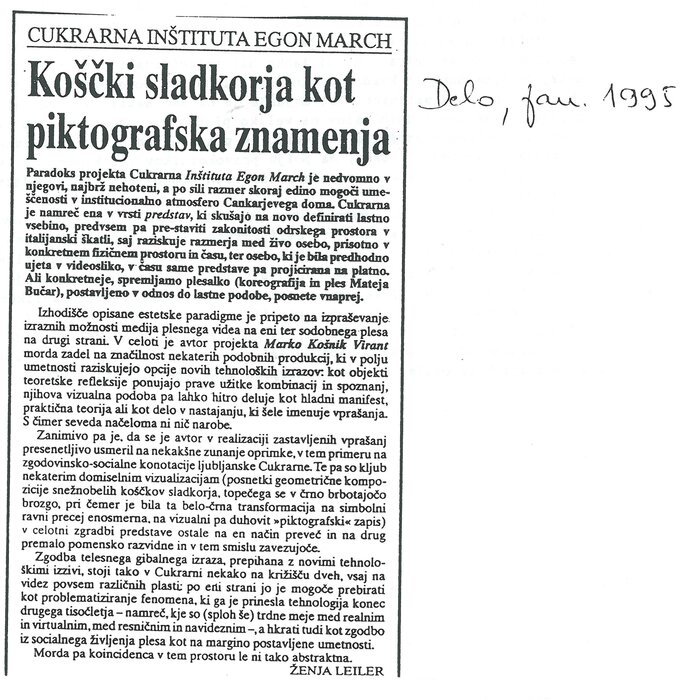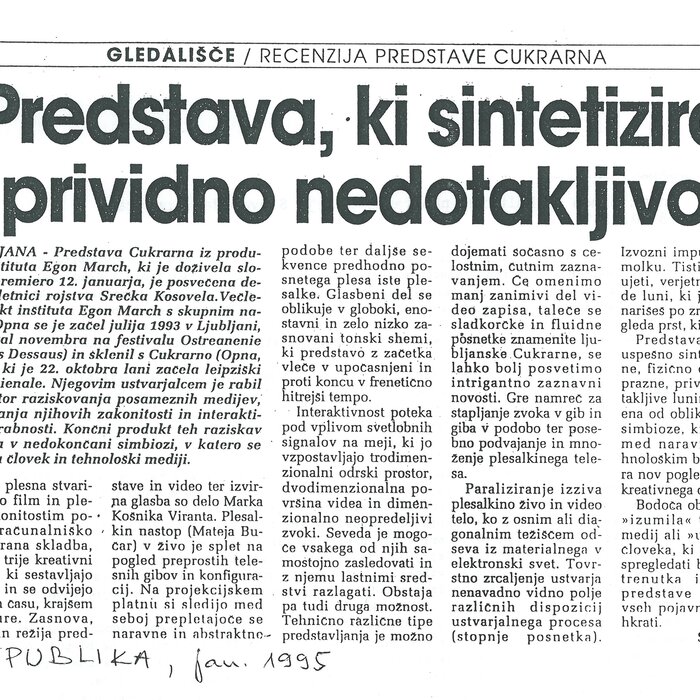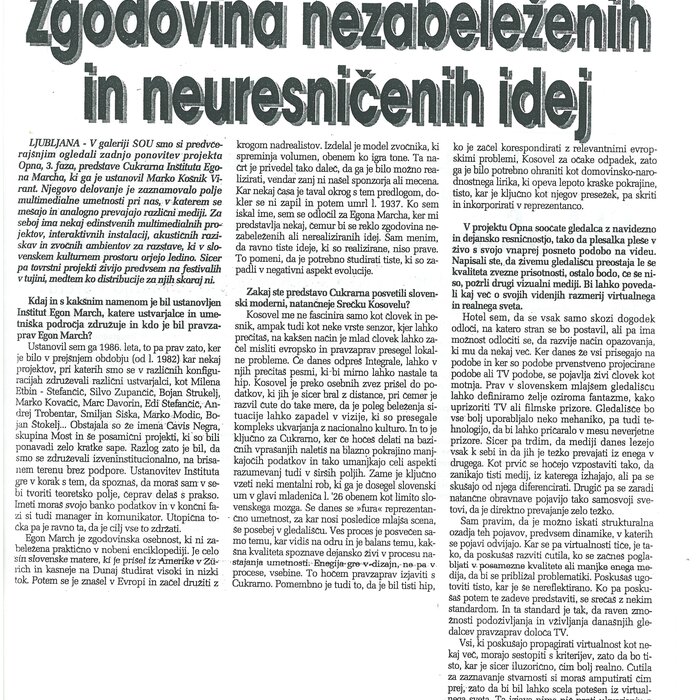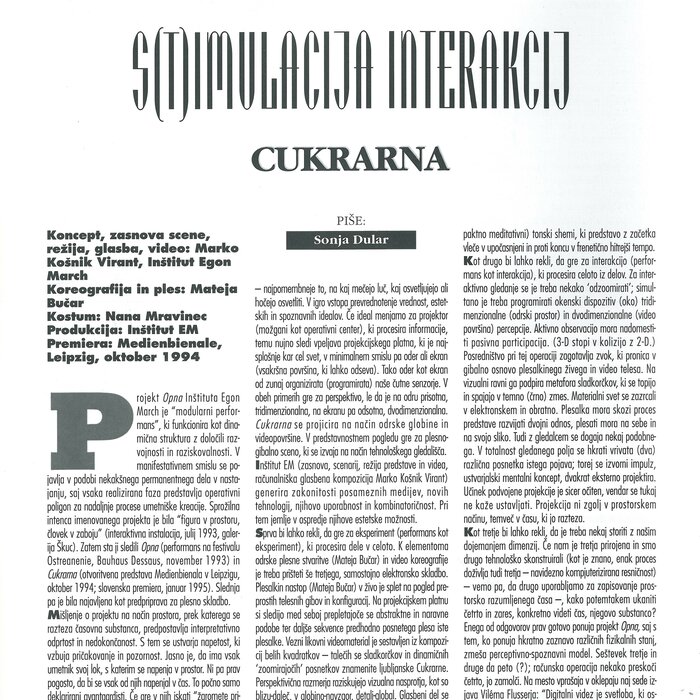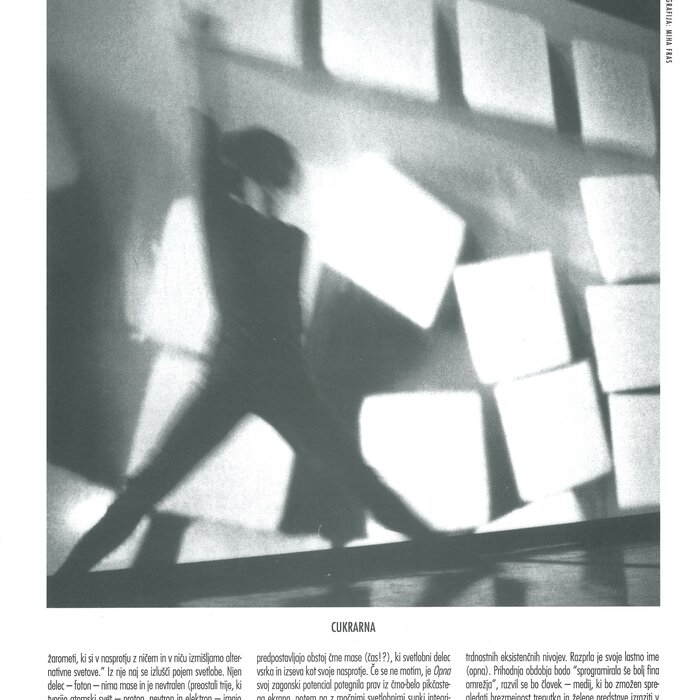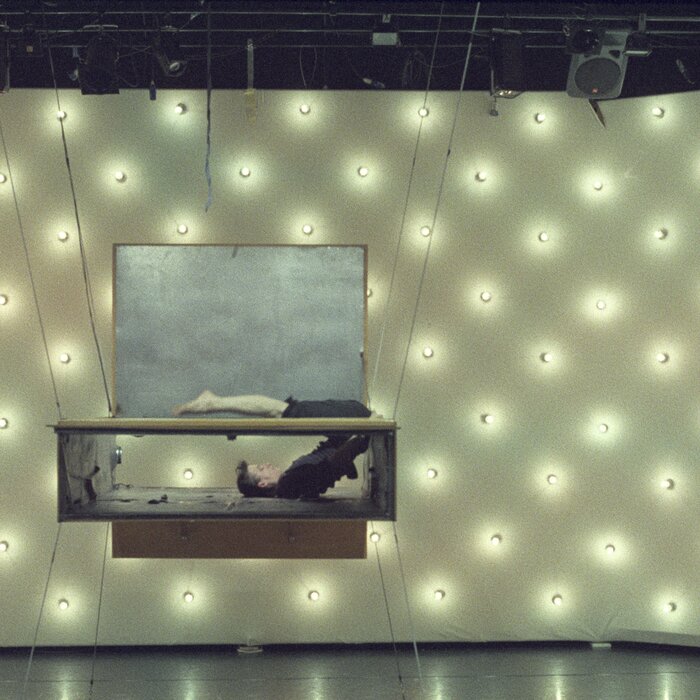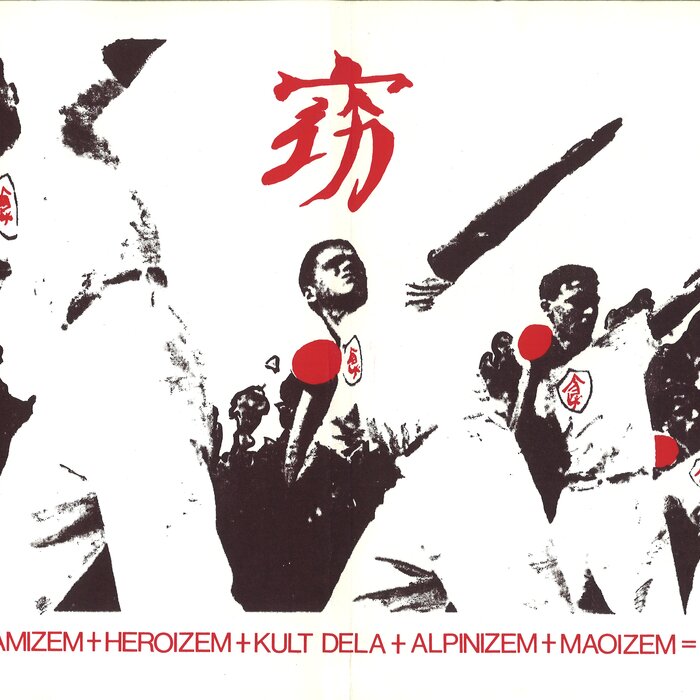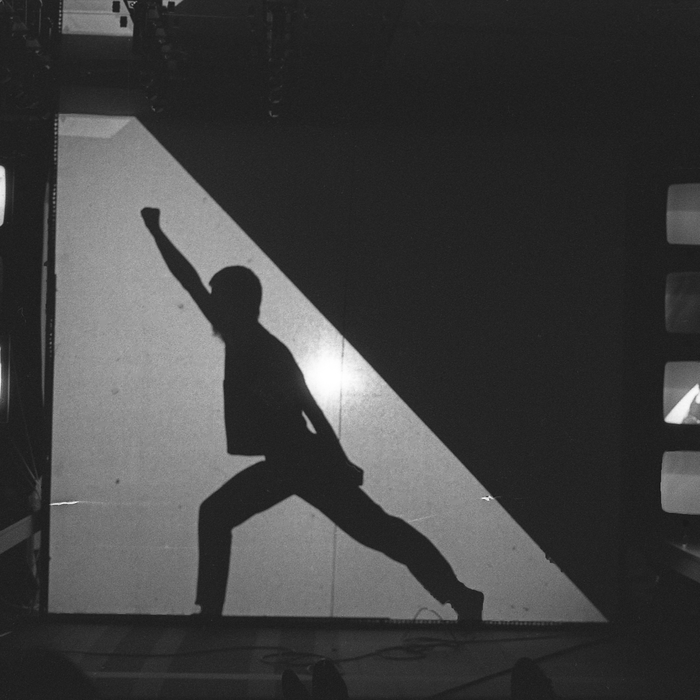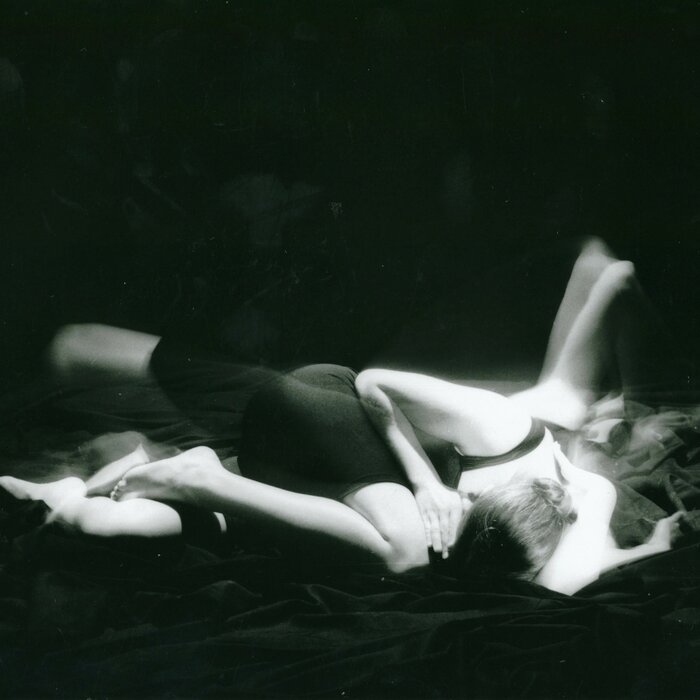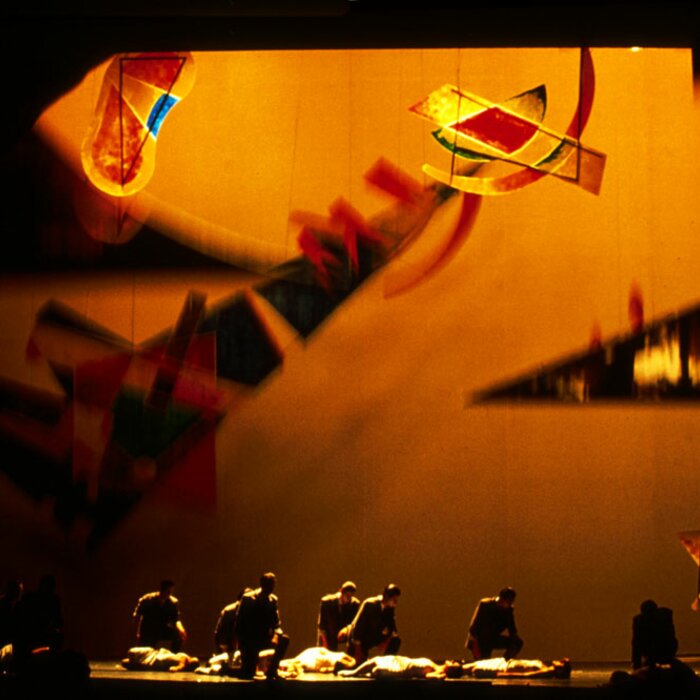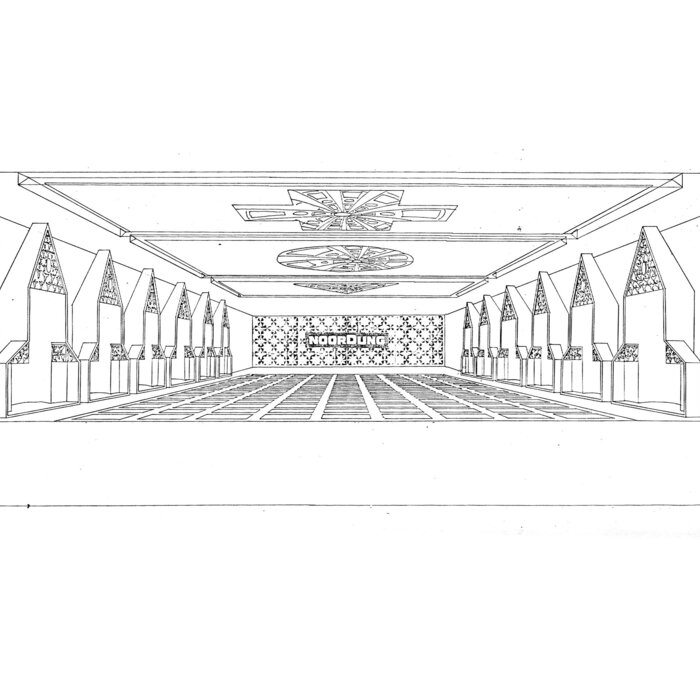The performance Cukrarna analyses the aesthetic quality of telematic and physical bodies. Trough the projection of a pre-recorded video choreography a situation is developed in which the dancer dances and interacts with her video image. The guiding rules determining the dancers movements are no longer governed by the “Italian box” stage, but by the two-dimensional perspective of the projected video image. The projection in the space is adjusted in such manner that the size of the recorded dancer corresponds with the living dancer positioned on the axis of perspective on which the viewer perceives both of them. Not only does the notion of dancer disintegrate into the living and the video image, but also the viewerÕs illusion fades in that there are similarities between the video image and the presentation rooms and bodies.
Despite the complex merging of different media, the performance uses a minimum of technical devices (video projector, MIDI synthesizer and computer graphics) and analyses the main problem of media. When using new systems of technology to reach aesthetic goals, it must be remembered that the limitations of the various media systems, on their own or combined, are separate and of a completely different nature than the aesthetic limitations to which they lead. If we analyze the main features of the media, rather than automatically glorify the possibilities of technology, we encounter a paradox... The problem is not how to conjure up the real in the virtual world, but how to free ourselves from the virtual in the real world. The task of the performance is to guide the spectator from the one side to the other - the viewer chooses the side he wants to be on. The artist however, has no other choice but to pervert and lure the media as far away as possible from their commercially predetermined functionality.
Cukrarna is the name of a sugar factory in Ljubljana in 19th century. The now derelict building was destroyed by a tremendous fire in which tons of sugar were burning for several days and nights. Ever since has served as some kind of hostel or shelter. The performance Cukrarna is dedicated to the Slovenian poet Srečko Kosovel, born in 1904, who spent some time in Cukrarna before he died in 1926.
